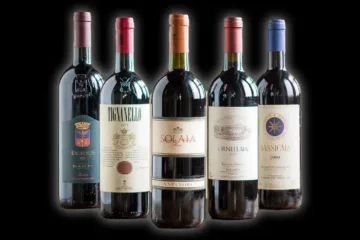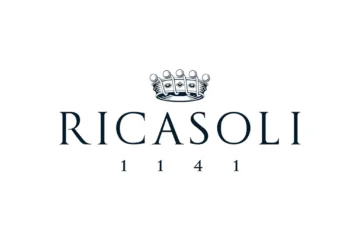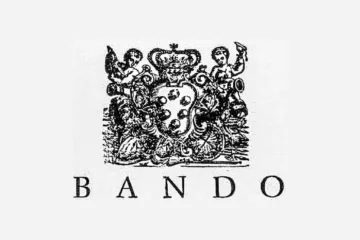Do you feel like wine is a very interesting world but you just do not understand anything at all? Do you feel that it is probably too complex for you? Do you feel like a complete stranger when wine connoisseurs tell you about all those fancy aromas (blueberry, blackcurrant, leather, tar…) they find in a wine glass. How is it possible to find tar aromas in wine? Is it a good thing? Is it even drinkable? Do you feel like most Champagne are too acidic? Do you feel like most of the red wines are too tannic, too astringent…
Well, the good news is that you should not worry; everyone has been there one day, including me. You are just at the very beginning of your wine journey. To jumpstart and set a foot in the world of wine, you just need a clear and basic structure. Through this educational article, I would like to provide you with a clear and simple three-step foundation to start understanding wine. Why 3 steps? Because, as in the lyrics of the Jackson 5 song, wine is “as easy as 1-2-3, as easy as A-B-C, as easy as Do-Ré-Mi”.
What is it about wine? Why is it so special? The “A-B-C” of Wine
- “A”.
“many available water sources could have made them sick for days”
Wine is a man-made product, without man, there is no wine. At their natural state, in the wild world, vines are made to climb up on trees and other vegetation in order to attain the top of the canopy. It allows it to get access to the sun and start producing fruits aiming at attracting birds and other animals that will eat its grapes to disseminate its seeds. That is really far away from the liquid you find in your bottle of wine. Probably at the very beginning men have learned to domesticate this vegetative state solely in order to grow some eatable fruits. Keeping in mind that thousands of years ago there was no running water and many available water sources could have made them sick for days, they probably quickly tried to find a reliable solution to drink a sanitized beverage. Then, grapes were turned into wine where alcohol played this sanitizing role. The first traces of wine making are considered to date back to around 4000 years B.C. That makes it a very old beverage! As in everything, men tried to perfect their skills at making it to improve its quality, to enjoy drinking it, and eventually to sell it. So wine is closely linked to our origins, civilization, history, and played a central role in our development.
- “B”.
“wine offers two characteristics that other alcoholic beverages do not”
That being said, humans also made alcoholic beverages from other fruits (apples…), crafted beers very early and learned how to make spirits later on. All of them addressing the same sanitization need. So why is wine so special? Despite its close link to religions, especially to Christianity, wine offers two characteristics that other alcoholic beverages do not. First, it gives a wider spectrum of aromas and flavors (without needing other additives) than other beverages. Second, it has the unique ability to evolve over time and gain more complexity. Beers, due to their lower degree of alcohol need to be stored at cooler temperatures and consequently have little possibility to evolve over time. Spirits on the other end have way higher alcohol titration (not very handy if you are looking for an every day drinkable solution) which implies that it takes more time to evolve (10, 20, 30 years being the norm) than wines as their alcohol level acts as an aroma preserver. Conversely, some wines stored in glass bottles can start to show aroma evolution after 2 or 3 years but for the most part need 5 to 8 years to improve in terms of aroma complexity (10 to 15 years for some prestigious and very tannic wines).
- “C”.
“the world of wine gives you unique access to human history”
Let’s summarize what we have learned so far: a wider array of natural aromas in the finished juice, an aroma complexity that improves faster, and a close tie to mankind’s history, civilization-building, and commerce. What else? We forgot to mention that each civilization made distinctive wines due to the different genetical profiles of their local grapes, local climates, local techniques, and so on. As such, it created a vast complexity of winemaking techniques and final results that both shaped and were shaped by local food production specialties (and food-beverage pairings). So, let’s wrap this up by saying that the world of wine gives you unique access to human history, food specialties, local habits, and much more.

What if I have no palate at all and I am just not able to distinguish anything in wine? The “1-2-3” of Wine
“All those fancy wine tasting notes, I just can’t recognize any of them in a wine, so I just drink it,” I’ve heard many times.If this sentence suits you, do not worry, you are not alone; everyone started there. For years, when I tasted wines, I had only one cursor: tannins. When the wines were too tannic, I found them unpleasant and harsh; when they had little tannin, I found them drinkable.
The good news is, it is very easily fixable. You just need a clear and basic structure to approach wine and start deciphering it. So below is a simple and basic three-step process to help you improve tremendously your ability to ‘read’ wine.
- “1”.
“just incline slightly your glass of wine in front of a white surface and take a look at your wine starting from the external ring to the center or vice-versa”
Start with what you see. Is it a red, white or rosé? What is the depth of its color (opacity)? Is the color monotonous or does it show some complexity? Is it too bright? Too shallow? Does it have some hues? Is it hazy? You can learn a lot just by looking at the color, reflections… inside your wine glass. In fact, for centuries, wine merchants based their purchase orders mainly on the color of the fresh pressed juice. It still gives you a good clue on the quality to expect once you will drink it (except for the haziness criteria as a growing number of wines are unfiltered nowadays to improve their complexity so, in that case, it does not mean the presence of spoilage bacteria anymore). To make it easier for your eyes to distinguish the various colors and complexity, just incline slightly your glass of wine in front of a white surface and take a look at your wine starting from the external ring to the center or vice-versa.
- “2”.
“Never rush, smell it a couple of times, then try to distinguish any perfume that comes out of it”
The most important part: the nose. In wine, everything starts with your nose. The more you smell before you drink your glass of wine, the more you will understand wine. The very basic mistake is for people to rush into drinking it. Never rush, smell it a couple of times, then try to distinguish any perfume that comes out of it (that is called the “first nose”). Then, swirl the wine in your glass and smell it again (that is called the “second nose”). You will see that some aromas and perfumes become more evident with your “second nose” (even when the temperature of service is horrific). This is the magic key! If you do not use your nose, you will not understand wine.
- “3”.
“Again, do not rush into swallowing your wine right away.”
Everything that you are doing wrong: the “Do-Ré-Mi” of Wine
Your wine ability will make a tremendous leap after the crucial 1-2-3 steps above. But, below are some things you should really pay attention to while tasting wine, as they can really alter your experience.
- “Do”.
“Buying the first bottle at your supermarket is probably the surest way to make the wrong choice”
Try not to pick the first wine bottle that you find at your local supermarket just because you find the label fancy, especially for your first few bottles. Just go to your local specialized wine shop and talk to one of the employees. Give your price constraints (they all have selected entry price bottles) and some of the context; they will help orient your choice. Make him speak and ask him for several suggestions, then make your choice.
Buying the first bottle at your supermarket is probably the surest way to make the wrong choice. Keep in mind that supermarkets, especially in the old world (Europe…), mainly sell wines for cooking purposes (sauces…).
- “Ré”.
The three factors that can kill your wine are: temperature of service, wine glass, and bottle ageing.
Temperature: Too cold a bottle of red wine is the surest way to perceive no aromas. Conversely, too warm a bottle of white wine is the surest way to only feel the alcohol in your wine and destroy its perfume. By rule of thumb, for whites and rosés, a temperature of service between 10 and 14 degrees Celsius should be fine; for reds, try to serve them between 14 and 18 degrees.
“just because it is made of crystal, it does not make it any better if the shape is similar to the random plastic cup”
Wine glass: drinking wine inside a plastic cup is the worst way to discover the wine world. And just because it is made of crystal, it does not make it any better if the shape is similar to the random plastic cup. As mentioned in Step 2 above, everything starts with the nose, so you need a wine glass that will help your nose do its job. Wine glasses are way more complex technical instruments than you can imagine when it comes to tasting wine. They come in various shapes and forms, and the best glasses are not linked to their prices or materials but to their ability to reveal aromas of certain grapes (called Grape-specific glasses). That is the reason why they have this characteristic “tulip” shape. So that, when you smell it atop your glass, it helps concentrate perfumes from the wine up to your nose.
“This process makes all the charm of powerful red wines”
Bottle aging: Pay attention to the vintage year on the label. If you select a powerful red (Bordeaux or other oak-aged wines) that has been bottled very recently, it is the surest way to have very unpleasant, harsh tannins that will disappoint you. For powerful reds, just prefer a 5-to 8-year-old vintage in order for the tannins to have started polymerizing and softening. This process makes all the charm of powerful red wines as they bring more complexity in aromas (bringing what we call “tertiary aromas” such as leather, tar, vanilla, tobacco, etc., compared to “primary fruity aromas”).
- “Mi”.
“Pay special attention to any of the following examples, especially when made just before drinking wine”
Be careful of the environment and context in which you taste wine. Often, people think about paying special attention to what food they will pair their wine with. This is a very good reflex as some foods can destroy your wine (i.e., a sweet dessert with a young fruity dry red wine). And vice versa, some wines can destroy your food (i.e., a powerful red with delicate fish). However, it is not enough. Pay special attention to any of the following examples, especially when made just before drinking wine: Brushing your teeth (toothpastes will leave molecules that will hinder your aroma perception); smoking cigarettes; wearing strong perfume; consuming too acidic, spicy, bitter, or astringent foods…
You need a nose and palate as neutral as possible, so take some time to eat some neutral food (soft bread…) and drink water prior any wine tasting. It will help you “to reset” your palate.
Then, just enjoy your wine trip! Cheers!

Follow me on my Social Media
Wine is a gourmet treasure, do not abuse alcohol!
None of this content has been sponsored
I did not receive any gifts or free samples that could be related to this article
Wine is a gourmet treasure, do not abuse alcohol!
None of this content has been sponsored
I did not receive any gifts or free samples that could be related to this article


